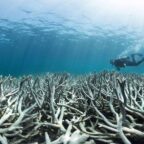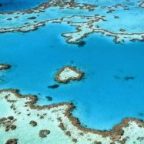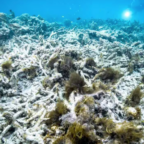
With WA’s coastline enduring a marine heatwave event, marine scientists have raised concerns about coral bleaching events along the Coral Coast. Sea surface temperatures were up to 3C warmer than average in January, and are expected to reach their highest levels in a decade by April, according to data from the CSIRO.
Australian Institute of Marine Science’s coral ecologist Dr James Gilmour, pictured, believes the thermal stress of the heatwave may lead to coral bleaching events in Ningaloo, Shark Bay and the Abrolhos Islands.
“Low level bleaching has already been observed in parts of Exmouth Gulf,” he said.
“While the recent tropical low has reduced environmental temperatures, the risk of bleaching will continue in the coming weeks.”
The Bureau of Meteorology says the heatwave has been associated with the La Nina weather event, bringing warm water south from the Indonesian archipelago along the WA coastline.
Dr Gilmour said scientists would be keeping a close eye on coral reefs but asked anyone who regularly travels to these areas to report any coral bleaching.
“It would be great to see people informing their local rangers or submitting a photo online at the Australian Institute of Marine Science website,” he said.
“This week we are conducting in-water surveys around Ningaloo — this monitoring will extend to other reefs at risk in the coming weeks.”
He said bleaching occurs when coral reefs are subjected water temperatures 1C to 2C warmer than average which lasts for several weeks.
The last major marine heatwave along the Coral Coast occurred in 2011 and was blamed for widespread coral bleaching from Ningaloo to Shark Bay.















Social Profiles